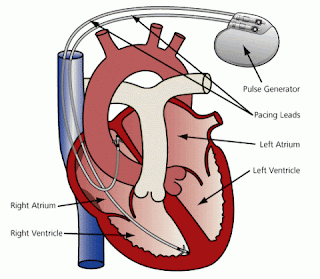10 Things That Were Discovered Accidentally
1. Viagra
Men being treated for erectile dysfunction should salute the working stiffs of Merthyr Tydfil, the Welsh hamlet where, in 1992 trials, the gravity-defying side effects of a new angina drug first popped up. Previously, the blue-collar town was known for producing a different kind of iron.
2. LSD
Swiss chemist Albert Hofmann took the world's first acid hit in 1943, when he touched a smidge of lysergic acid diethylamide, a chemical he had researched for inducing childbirth. He later tried a bigger dose and made another discovery: the bad trip.
3. X-rays
Several 19th-century scientists toyed with the penetrating rays emitted when electrons strike a metal target. But the x-ray wasn't discovered until 1895, when German egghead Wilhelm Rontgen tried sticking various objects in front of the radiation - and saw the bones of his hand projected on a wall.
4. Penicillin
Alexander Fleming, a Scottish biologist and pharmacologist, invented Penicillin
5. Artificial sweeteners
Speaking of botched lab jobs, three leading pseudo-sugars reached human lips only because scientists forgot to wash their hands. Cyclamate (1937) and aspartame (1965) are byproducts of medical research, and saccharin (1879) appeared during a project on coal tar derivatives. Yummy.
6. Microwave ovens
Microwave emitters (or magnetrons) powered Allied radar in WWII. The leap from detecting Nazis to nuking nachos came in 1946, after a magnetron melted a candy bar in Raytheon engineer Percy Spencer's pocket.
7. Brandy
Medieval wine merchants used to boil the H20 out of wine so their delicate cargo would keep better and take up less space at sea. Before long, some intrepid soul - our money's on a sailor - decided to bypass the reconstitution stage, and brandy was born. Pass the Courvoisier!
8. Vulcanized rubber
Rubber rots badly and smells worse, unless it's vulcanized. Ancient Mesoamericans had their own version of the process, but Charles Goodyear rediscovered it in 1839 when he unintentionally (well, at least according to most accounts) dropped a rubber-sulfur compound onto a hot stove.
9. Silly Putty
In the early 1940s, General Electric scientist James Wright was working on artificial rubber for the war effort when he mixed boric acid and silicon oil. V-J Day didn't come any sooner, but comic strip image-stretching practically became a national pastime.
10. Potato chips
Chef George Crum concocted the perfect sandwich complement in 1853 when - to spite a customer who complained that his fries were cut too thick - he sliced a potato paper-thin and fried it to a crisp. Needless to say, the diner couldn't eat just one.
11. Pacemaker
Pacemaker - a life saving medical device
Wilson Greatbatch, an American engineer, invented Pacemarker help record fast heart sounds
The list wouldn\'t be complete without one absent-minded professor, who invented the Pacemarker - a life saving medical device. When Wilson Greatbatch, an American engineer, was working on making a circuit to help record fast heart sounds, he reached into a box for a resistor in order to finish the circuit and pulled out a 1-mega ohm resistor instead of a 10,000-ohm one. The circuit pulsed for 1.8 milliseconds and then stopped for one second. Then it repeated. The sound was as old as man: a perfect heartbeat.
12. Radioactivity Phenomenon
Back in 1896, Becquerel, who shared a Nobel Prize with Pierre and Marie Curie for their work in discovering radioactivity, was fascinated by two things: natural fluorescence and the newfangled X-ray. He ran a series of experiments to see if naturally fluorescent minerals produced X-rays after they had been left out in the sun.
Becquerel shared a Nobel Prize with Pierre and Marie Curie for their work in discovering radioactivity
Radioactivity
One problem was that he did these experiments in the winter with a long stretch of overcast skies within oneweek. He left his equipment wrapped up together in a drawer and waited for a sunny day. When he got back to work, Becquerel realized that the uranium rock he had left in the drawer had imprinted itself on a photographic plate without being exposed to sunlight first. There was something very special about that rock. Working with Marie and Pierre Curie, he discovered that that something was radioactivity.















No comments:
Post a Comment